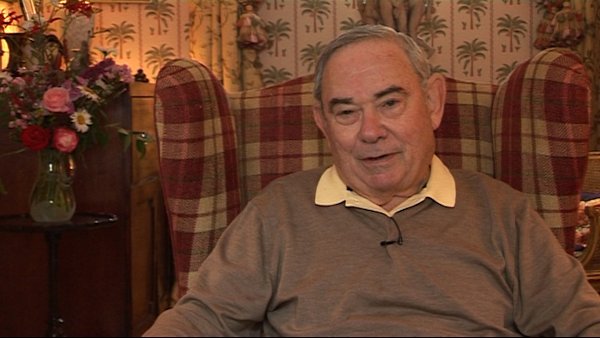NEXT STORY

Studies of normal human tissue
RELATED STORIES

NEXT STORY

Studies of normal human tissue
RELATED STORIES


|
Views | Duration | |
|---|---|---|---|
| 41. The world's first live virus vaccine | 94 | 00:35 | |
| 42. Jonas Salk | 104 | 00:43 | |
| 43. Creating sterile rooms | 58 | 01:43 | |
| 44. 'The golden era of virology' | 63 | 02:43 | |
| 45. The early days of cytogenetics | 59 | 02:04 | |
| 46. Working with cancer-causing viruses | 77 | 02:05 | |
| 47. Studies of normal human tissue | 87 | 01:18 | |
| 48. The immortality of cancer cells | 131 | 01:55 | |
| 49. Can cells live forever? | 148 | 01:15 | |
| 50. How to isolate your own cells | 88 | 02:28 |


So having now set up the laboratory and supplying people with the cell cultures they needed, and media that they wanted, I now had some free time to do some research. And one of things that I decided to do was based on this ferment of activity that was now occurring in the field of virology and cell culture, where viruses were now being discovered, new viruses that caused cancer in rodents and mice, and in rats, all this done principally by using cell culture technology.
So it occurred to me that because people were finding viruses that had some relationships and in some case actual cause of cancers in lower animals, that it would be an interesting project to look for viruses in human tumour tissue, cancer tissue. And so I pursued that goal. The... Thinking about how to approach it, it occurred to me that obviously I needed to get tumour tissue, cancer tissue from operating theatres, and discovered that was very easy to do because I was... the Wistar Institute was right across the street from the University of Pennsylvania hospital where cancer surgery is done routinely, and because of Hilary's contacts there, and some of my contacts there, we could easily arrange to get tumour tissue which is, or a small piece of which is usually used for pathology purposes, but a substantial proportion of that tissue is simply incinerated. And so we were able to get tissue easily from this cancer material.
Leonard Hayflick (b. 1928), the recipient of several research prizes and awards, including the 1991 Sandoz Prize for Gerontological Research, is known for his research in cell biology, virus vaccine development, and mycoplasmology. He also has studied the ageing process for more than thirty years. Hayflick is known for discovering that human cells divide for a limited number of times in vitro (refuting the contention by Alexis Carrel that normal body cells are immortal), which is known as the Hayflick limit, as well as developing the first normal human diploid cell strains for studies on human ageing and for research use throughout the world. He also made the first oral polio vaccine produced in a continuously propogated cell strain - work which contributed to significant virus vaccine development.
Title: Working with cancer-causing viruses
Listeners: Christopher Sykes
Christopher Sykes is a London-based television producer and director who has made a number of documentary films for BBC TV, Channel 4 and PBS.
Tags: The Wistar Institute, Hilary Koprowski
Duration: 2 minutes, 5 seconds
Date story recorded: July 2011
Date story went live: 08 August 2012